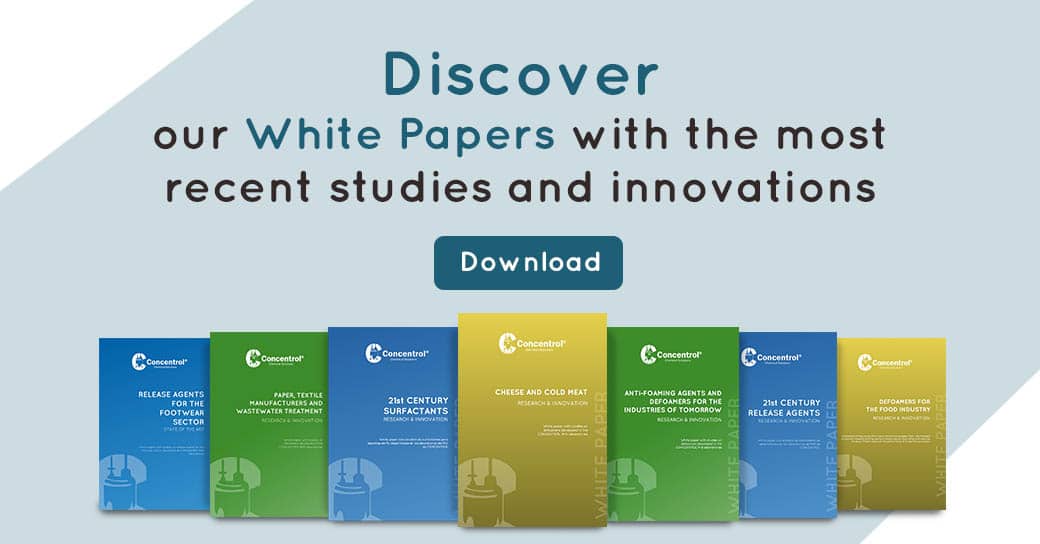Concentrol’s R&D team is constantly studying market trends in order to improve the company’s product lines, adapting them to the latest technological innovations.
In this line, Concentrol has carried out a market study focused on car filters and armrests made from integral polyurethane foam, which are products with a high demand in the international market.
There are different types of filters, but the most common ones made of polyurethane are air filters and fuel filters, present in all vehicles. Integral foam armrests, on the other hand, are present in public transport vehicles and in the furniture sector. Armrests are also made from flexible PU foam.
Automotive filters and their potential
Different types of filters are used inside vehicles: air filters, oil filters, fuel filters, cabin air filters, particulate filters, combined filters and other filters such as in air dryers, refrigeration, gearbox oil, and centrifuges.
Following is a detailed description of polyurethane foam filters:
- Air filters
One of the keys to running a combustion engine is to have clean intake air. If there are pollution particles such as soot or dust entering the combustion chamber, this dirt can reach the engine and cause premature wear. Another element that may be affected is the electronic components located between the air intake and the combustion chamber.
Air filter elements:
Under the hood of modern vehicles, more space than ever before is needed for electronics, new technical components and safety technology. This means that air filters have to adapt to the existing installation space, which is why we can find them in different shapes such as rectangular, trapezoidal, conical oval or even with a stepped filter surface.
Secondary elements:
There are also a number of secondary elements that protect the engine when the main filter element is being replaced or is damaged. This additional protection is mainly used in extreme dust conditions.
- Fuel filters
Fuel filters are adapted to the requirements of delicate injection systems and serve to ensure that dirt particles and water in fuel do not damage the engine. Filters protect injection systems from wear and corrosion, helping to keep the engine running smoothly.
There are different types of fuel filters:
- Armoured filters: the body and the filter element are a compact unit.
- In-line filters: perfectly integrated in the fuel pipe.
The filter elements are located in an independent housing integrated in the engine.
- Cabin air filters
Cabin air filters ensure greater comfort and fresh air, as they virtually free all the air that enters the vehicle from dust, pollen, soot or other types of pollutants.
These filters should be checked once a year or every 15,000 km.
The manufacturing process
The filter elements are composed of a cellulose paper formed by a web of fibres impregnated with resins that allow air to pass through but not dust.
This paper has two sides, one is the filtered air outlet and the other, which is less satiny and rougher, is the dirty air inlet.
The paper goes through a preheating process in an oven at 150 degrees to soften the resins and allow a “waffling” process, which consists of passing the paper through rollers that crushes it and leaves a mark, to allow it to fold. Once folded, the paper passes through a larger oven in order to harden it and thus provide mechanical strength.
A hotmelt is applied over the folds by means of a cord so that the paper sheets are fastened or to stick fabric on top of the filter, and the folds are cut according to the model.
These sheets of paper held by hotmelt are placed in a mould, the release agent is applied and then the polyurethane is injected into the mould, becoming attached to the paper.
The moulds in which the polyurethane is injected can be of several types: round plastic at room temperature or metal, heated or at room temperature. The release agents can also be applied in different ways, depending on the mould, using a fixed airbrush filter, special HVLP (High Volume Low Pressure) guns, a brush or automatic application with rollers by robots.
Armrests
The central armrests in cars are made of a part of flexible PU foam and are later covered with fabrics, synthetic fabric or leather. In almost all light vehicles, the consoles where the flexible foam is mounted are usually made of plastic or metal.
On the other hand, in public transport vehicles or in the furniture sector, the parts can be made of integral foam. In these cases, the part does not usually carry any additional coverage.
Below we will explain the Concentrol range of specific products for integral skin polyurethane foam for this type of parts and sectors.
Types of release agents
The range for these sectors includes solvent-based and water-based release agents and mould cleaners. Due to the type of moulds currently on the market, almost all manufacturers use solvent-based release agents, as water-based moulds are rarely introduced.
Solvent-based release agents used in the manufacture of PU filters can be classified into the following types:
- Diluted solvent base release agent (class I, II or III).
- Concentrated solvent base release agent (class II or III).
- Wax base concentrated solvent base release agent.
- Concentrated solvent base release agent with a flash point > 80°C.
- Solvent-free 100% solid release agent.
Concentrol lines
Below we detail the main product lines that can be offered to Concentrol customers indicating the type of product, the application and other observations.
- CONCENTROL SI-345 FM, diluted solvent base class II. Applied with fixed airbrush nozzle.
- CONCENTROL NL-2-2714, solvent based, concentrated. It is applied with HVLP (High Volume Low Pressure) spray gun and is especially suitable for high mould temperatures.
- CONCENTROL SI-345 CN-215, solvent-based, class II concentrate. Applied with HVLP gun.
- CONCENTROL SI-345 CN-3, solvent-based, class III concentrate. Applied with HVLP gun.
- CONCENTROL SI-345 WX, solvent based, class II concentrate. Applied with a brush and it is wax based.
- CONCENTROL LP IA-114-10, water-based. Very versatile, applied with a brush or spray gun.
- CONCENTROL LP IADC-114-57 ESB, water-based, concentrate for dilution. Integral in general to apply with a brush or gun.
- Among others, according to the desired needs and requirements.
Note: Class I < 21° (flash point); 21° < Class II < 55°; Class III > 55°
Concentrol also has the product CONCENTROL CLEANER LML-1200, a product designed to remove the remains of release agents in moulds, if necessary.


